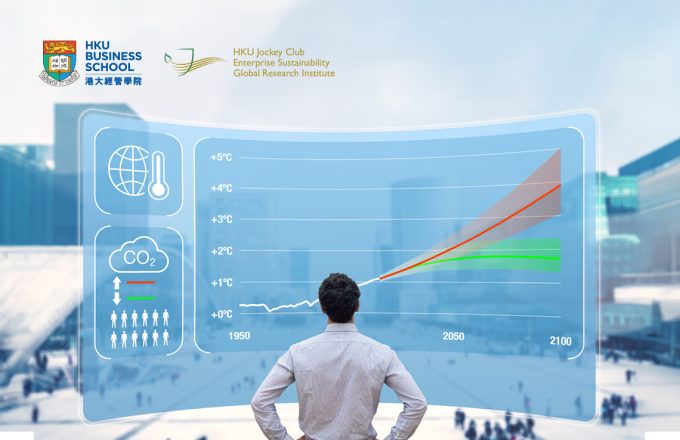
BEAUTY: In the Eye of the consumer?
New research into consumer buying behaviour shows that endowing products with human-like characteristics increases increases their appeal to customers when the product has attractive appearance design. By adapting their product designs and packaging in line with these findings, marketers and product developers can gain an edge over the competition and improve the chances that customers will choose their products.
Retailers and product designers have long battled with the dilemma of how to make their products stand out on the shelf and appeal enough to consumers to improve their likelihood of being selected for purchase over competing products. One method has been to make products look ‘friendly’ by giving them recognizable human physical attributes. Consider for example the smiling faces on M&M candies, or the long-standing practice of setting watches at I0. I 0am so that the hands resemble a smiling face.The practice can have quantifiable effects on sales:A study of car sales showed that cars with grilles that were turned upwards to resemble a smile and with headlights that looked like eyes sold better than other cars.A smiling face on a person or a product is perceived as positive because it is considered to be a sign of happiness and friendliness.
This method is based on the idea of anthropomorphism — the attribution of human characteristics to non-human objects. Anthropomorphism is connected to our need to form meaningful links and understand the world and objects around us.The trend to endow non-sentient objects with human characteristics is increasingly prevalent, and is particularly visible in new tech apps and products such as Alexa,Amazon’s cloud-based voice service,which is designed to be always responsive and switched on, in the same way that a human companion might be.The Alexa app has achieved high levels of interaction with humans, with many users conducting conversations with the app in a near-human way.
But how much do consumers take account of a product’s appearance when making a buying decision, and what kinds of attributes do they relate to most? Beyond form and function, what other factors make one product more attractive than another when consumers are making a buying decision?And how can product designers and marketers make the best use of this information to sell more of their products?
These are questions that have intrigued three researchers — Echo Wen Wan, professor of marketing at HKU Business School, Rocky Peng Chen, assistant professor of marketing at the School of Business of Hong Kong Baptist University, and Liyin Jin, professor of marketing at the School of Management of Fudan University. In their research, published in the Journal of Consumer Research,April 20l7, the three examined their theory that “anthropomorphizing a product would prompt consumers to rely on the appearance attributes and to apply the beautiful-is-good belief in judging the product, which in turn leads to greater preference for products with attractive appearance.”
They knew that form — or appearance — and function are key factors in buying decisions, but they wanted to go further by exploring to what extent consumer choices were influenced by presenting a product not merely as an object with some human-like physical features, but as having human characteristics. Anthropomorphism goes beyond merely attributing life to a non-living object. It also represents the object’s non-human characteristics in human terms. In this way, objects are presented as having conscious awareness, intention and emotion. For example, the cleaning product Mr Muscle is represented as a strong man who can offer a solution to cleaning problems.
Appearance cues such as face and body features are important because they are often the first input that people access when they are forming impressions about new acquaintances. Of particular interest to the researchers is the idea that, people apply their beliefs about appearance to judge a person, then what if people use the same process to make their choices in product selection?
The trio went beyond examining physical appearance to discern how consumers use the same ways in which they understand a person to understand an anthropomorphized product. They found that to increase the appeal of a product to consumers, the product should go beyond the suggestion of attractive human features to include a less obvious combina- tion of perceived positive attributes, characteristics and intentions based on the age-old belief that beauty equals goodness.Thus a product’s attractiveness, like human beauty, may lie in the eye of the consumer, or at least in the hands of the clever marketer.
The ‘beautiful is good’ link is based on the commonly held belief that physically attractive people have many positive personal qualities. This belief is pervasive in many areas of society and very powerful, even when there is no or little proof of its truth. Our opinion of other people is greatly influenced by their appearance. Studies on criminal sentencing that finds defendants with faces deemed untrustworthy are more likely to be found guilty. Consumers assess a salesperson’s empathy based on whether the person has a steady gaze. Physically attractive people are commonly rated higher than less attractive people for levels of intelligence, social skills, mental health and ability to perform a task.
The link between beauty and goodness is also supported by neuroscience.The brain regions that deal with assessing beauty and morality overlap, and opinions on people’s attractiveness and goodness increase brain activity in the same area of the brain. Anthropomorphism affects the brain in the same way. Neuroscience shows that the same neural pathways that people use to make judgments about other people are also activated when we judge inanimate objects that have human characteristics, such as animated abstract shapes. Once triggered, people then proceed to treat those objects as having human reactions and emotions that they can empathize with.
Similarly, if people see an attractive product as a person, they will apply their existing belief that beautiful is good and endow the product with positive attributes that will encourage them to buy it in preference to other products that are not perceived as having the same positive ‘traits’.
The results support the theory. People who saw a particular product as a human rather than an object were found to spend more money and time looking for information about the product’s appearance. They also showed a preference for products with better appearance than competing products and were more likely to choose and purchase products that they mconsidered looked better and were more attractively packaged than other products, based on the belief that beautiful is good. Marketers and product designers can find helpful takeaways from these findings, say the researchers.
First, if you are going to anthropomorphize a product, make sure that the product and its packaging looks sufficiently attractive to trigger the beautiful is good link. That’s because anthropomorphism can also backfire: If you succeed in anthropomorphizing a product but with an inferior appearance that consumers can link to negative attributes, you may end up damaging your sales.
Second, anthropomorphism can be an effective solution to consider if your product is competing with others that outdo it in terms of functional attributes, which remains the other key factor in consumer preference decisions. Improving the attractiveness of your product and its packaging in an anthropomorphic way can trump functional attributes in consumer choice decisions. Finally, take a lesson from food products.Whi|e healthy food products tend to emphasise their functional benefits, unhealthy products often use anthropomorphic aids, such as mascots, in their packaging and advertising.There is no reason why a product can’t do both. Consider emphasizing both the benefits of your product and also using attractively anthropomorphic design and packaging.
Contributing Reporter: Liana Cafolla
Source: Echo Wen Wan, Rocky Peng Chen, Liyin Jin. Judging a Book by Its Cover? The Effect ofAnthropomorphism on Product Attribute Processing and Consumer Preference. Journal of Consumer Research, 20l7, 43(6), I008—I030.
https://academic.oup.com/jcr/article-abstract/43/6/1008/2736402?redirectedFrom=fulltext







